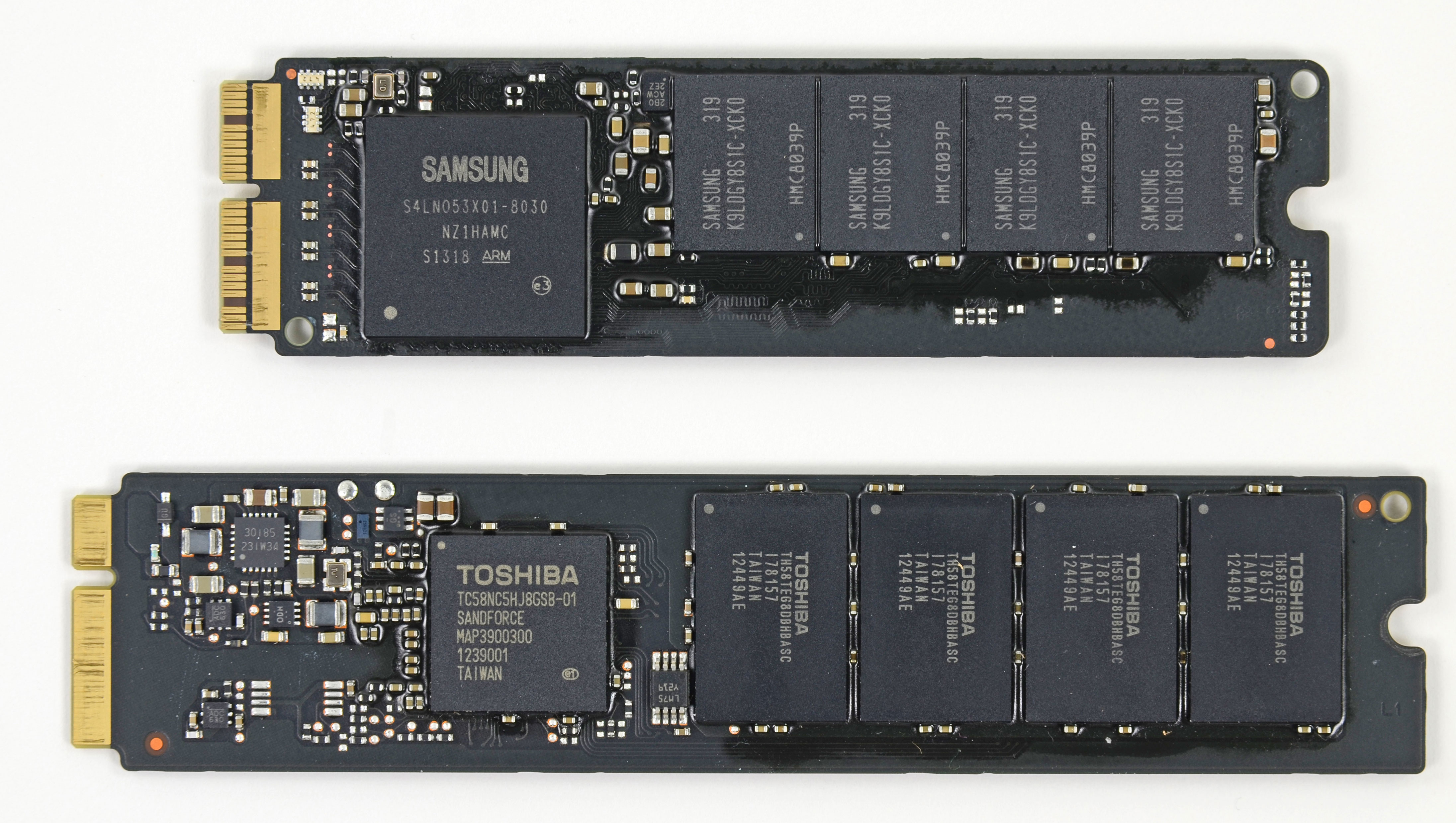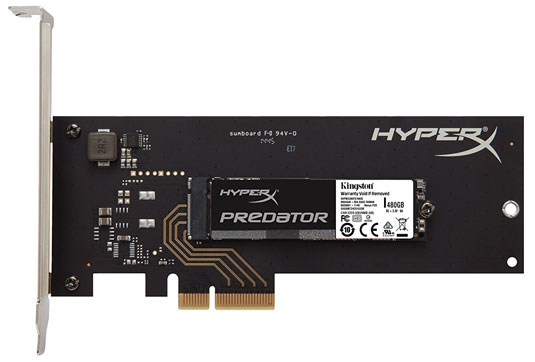Upgrade nearly any Apple computer for faster speeds and more flash storage. SSD upgrade kits include all tools needed to safely upgrade your Mac. Apple Mac Mini Desktop - Intel Core i5-4260U 1.4GHz, 4GB LPDDR3 Memory, 500GB HDD, ThunderBolt, MacOS v10.14 Mojave - A1347 MGEM2LL/A (2014-2018). Carrier board is located internally between the Mac and the original SSD module. It supports any M.2 PCI Express (M-key) SSD modules with standard lengths 2280 and 2260, 22110 (optional). Carrier Board supports x4 PCI Express Gen 3 connection on each M.2 circuit, and it is compliant with PCI Express Specification 3.0 and M.2 Specification 1.1.
Card capacity and size
Mac Pro has eight PCIe x16* sized slots that accept many different types of PCIe cards:
- Slot 1: up to x16 lanes (double-wide)
- Slot 2: up to x8 lanes (double-wide)
- Slot 3: up to x16 lanes (double-wide)
- Slot 4: up to x16 lanes (double-wide)
- Slot 5: up to x16 lanes (single-wide)
- Slot 6: up to x8 lanes (single-wide)
- Slot 7: up to x8 lanes (single-wide)
- Slot 8: up to x4 lanes (half-length)
Mac Pro Ssd
Mac Pro Expansion (MPX) Modules can use up to two slots each — in slots 1-2 and slots 3-4. Mac Pro comes with the Apple I/O card preinstalled in slot 8 which contains two Thunderbolt 3 ports, two USB-A ports, and a 3.5 mm headphone jack. Learn about PCIe cards you can install in your Mac Pro (2019).
Check available slots
To check the status of each slot, choose Apple menu > About This Mac, then click the PCI Cards tab.
By default, Mac Pro automatically balances bandwidth between all of the cards across the two PCIe pools. You can use Expansion Slot Utility to make manual adjustments to pool allocations.
If you install two Radeon Pro Vega II MPX Modules, you can connect them together using Infinity Fabric Link. Learn how to connect two Radeon Pro Vega II MPX Modules.
Installing PCIe cards
Learn how to remove the housing or top cover of your Mac Pro and install a PCIe card.
Remove the housing or top cover
Follow the steps to remove the housing on Mac Pro (2019) or the top cover on Mac Pro (Rack, 2019).
Mac Pro (2019)
- Shut down your Mac Pro.
- Wait approximately 5-10 minutes for the computer to cool down.
- Unplug all cables except the power cord from your computer.
- Touch the metal housing on the outside of Mac Pro to discharge any static electricity, then unplug the power cord.
Always discharge static before you touch parts or install components inside your Mac Pro. To avoid generating static, don't move around the room until you finish installing the cards and slide the enclosure back onto the computer. - Flip the top latch up, then twist left to unlock the housing.
- Lift the housing straight up and off of Mac Pro. Carefully set it aside.
Mac Pro won't turn on when its cover is removed.
Mac Pro (Rack, 2019)
- Shut down your Mac Pro.
- Wait approximately 5-10 minutes for the computer to cool down.
- Unplug all cables except the power cord from your computer.
- Touch the metal housing on the outside of Mac Pro to discharge any static electricity, then unplug the power cord.
Always discharge static before you touch parts or install components inside your Mac Pro. To avoid generating static, don't move around the room until you finish installing the cards and slide the top cover back onto the computer. - Slide the top cover release latches to the unlocked position, lift the top cover and pull it away from the front plate, then set it aside.
Install a PCIe card
- Slide the lock to the unlocked position.
- Using a Phillips-head screwdriver, unscrew and remove any brackets and slot covers covering the slots where you want to install your card.
- Remove your new card from its static-proof bag and hold it by its corners. Don't touch the gold connectors or the components on the card.
Use only PCIe modules that are safety certified (CSA, UL, or equivalent) and specifically state that they are compliant with the industry standard PCIe specification. Use of non-certified compliant modules may not keep different input power sources separated, resulting in a possible burn hazard. - Make sure the card pins are in line with the slot as you insert the card into the PCIe slot.
- Slide the lock to the locked position.
- Reinstall any side brackets you removed, then tighten the screws on the bracket.

Reinstall the housing or top cover
Follow the steps to reinstall the housing on Mac Pro (2019) or the top cover on Mac Pro (Rack, 2019).
Mac Pro (2019)
- Carefully lower the housing over Mac Pro.
- After the housing is fully seated, twist the top latch right and flip it down to lock it.
Top: Locked position (dots match)
Bottom: Unlocked position (dots do not match) - Connect the power cord, display, and any other peripherals.
Mac Pro (Rack, 2019)
- Align the edge of the top cover with the slot in the front plate, then firmly press near the release latches and listen for them to click into place.
- Connect the power cord, display, and any other peripherals.
Turn on third-party drivers
Some third-party PCIe cards require a driver before they can be used in macOS. After you install a driver for a third-party PCIe card, restart your Mac Pro, then turn the driver on:
- Choose Apple menu > System Preferences, then click Security & Privacy.
- Click the lock and authenticate as an administrator.
- Click the Allow button.
- Restart your Mac.
Use Expansion Slot Utility
When you install or remove PCIe cards on your Mac Pro, EFI detects the cards in each slot and allocates bandwidth between the two pools to maximize throughput. Expansion Slot Utility lets you view and change how your cards are allocated.
Pcie Ssd For Mac Mini
Use Automatic Bandwidth Configuration
By default, your Mac Pro uses Automatic Bandwidth Configuration to automatically manage how the cards are allocated to each of the two pools.
Assign pool allocations manually
If you want to manually assign the pool allocations for your cards, turn off Automatic Bandwith Configuration and choose a pool for each card. For example, you might want to give a single card 100 percent allocation of pool A.
Whenever you make changes to pool allocation, Expansion Slot Utility prompts you to save your changes and restart your Mac before they take effect.

Get help installing PCIe cards
Learn what to do if you get a PCIe card misconfigured error or your Mac Pro won't turn on after installing a PCIe card.
Resolve PCIe card misconfigured errors
If your PCIe cards can be installed in different slots to provide better performance, you'll see a PCIe card misconfigured notification after your Mac Pro starts up:
Click Learn More, which opens the PCI Cards tab of About This Mac. Then, click Expansion Slot Utility to view recommendations on how you should reconfigure your cards.
If your Mac Pro doesn't start

If your Mac Pro doesn't start up and the status indicator light flashes amber twice after installing a PCIe card, the card might not be compatible with your Mac Pro or you might have too many 32-bit PCIe cards installed.
Pcie Ssd Review

If you recently installed one or multiple PCIe cards, remove each card one at a time and try turning on your Mac Pro after each card removal.
Learn more
Key Features
Adds Ultra-Fast SSDs to Your System—Mounts four M.2 NVME SSDs (sold separately) in your computer’s, or Thunderbolt expansion chassis' x16 PCIe slot
High-Performance PCIe Interface—PCI Express 3.0 x16 host bus interface for high-performance applications
Superior Performance—Concurrent data transfers speeds up to 12,000 MB/sec(3)
Great Way to Add Up to 8TB of M.2 SSD Storage to Computers with Thunderbolt—Perfect for use in Sonnet's Echo™ Express III-D, Echo Express III-R, xMac™ mini Server, xMac Pro Server, and Thunderbolt expansion systems
RAID Support—Supports macOS and Windows RAID 0; macOS supports RAID 5 with the addition of SoftRAID
macOS Boot Support—Supports booting from a single (non-RAIDed) attached SSD
Concatenation (Span) Support—Supports creating a single, large volume that spans all four SSDs under Mac, Windows, or Linux

NVMe Compliant SSDs—Typically no drivers required(4)
S.M.A.R.T. Support—Supports S.M.A.R.T. data reporting
Smart Fan—The fan is temperature-controlled and spins only when and as fast as needed, minimizing audible noise
Lifetime Technical Support
